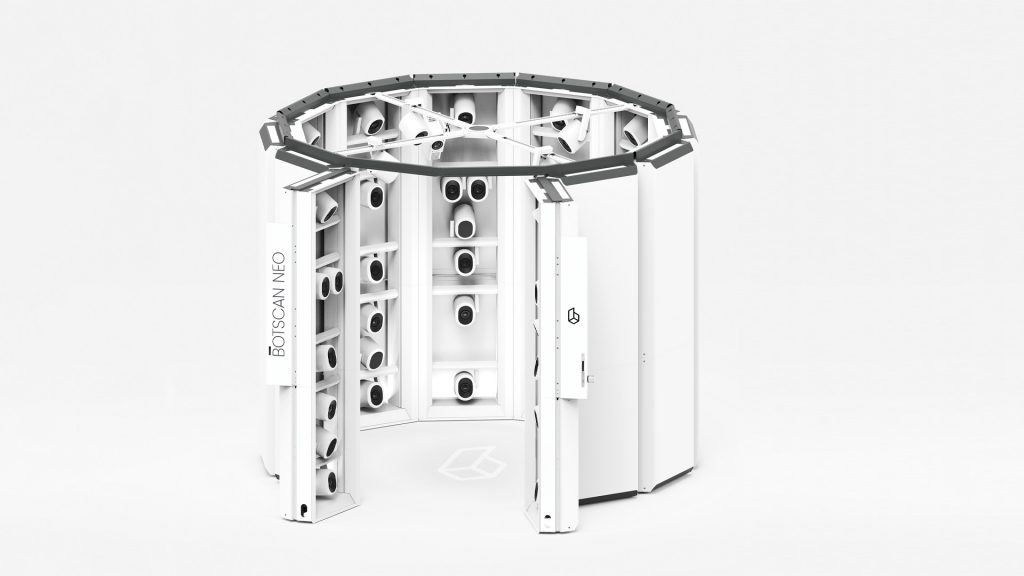
Photogrammetry Rig for 3D Scanning: A Complete Guide
What is a Photogrammetry Rig?
A photogrammetry rig refers to a setup of camera and lighting equipment. These setups allow for the capture of a large number of photos of an object or subject from various perspectives.
The aim is to calculate photorealistic 3D models of the depicted objects. (If you want to learn more about how photogrammetry respectively 3D scanning works, we recommend this article.)
For photogrammetry to deliver good results, it relies on a broad data base. The more images from more perspectives, the better.
It is essential that the object does not move or deform during the capture process, as each deviation results in fragments, holes, or distortions in the final 3D model.
Practical Implementation of Photogrammetry Rigs
Theoretically, scanning an object requires just a single camera. It is important to capture the object from top to bottom from all possible perspectives. To do this, move continuously around the object and take pictures from all different angles.
This approach requires a lot of practice and time. Thus, it makes sense to simplify the capture process and ensure more consistent results.
For clarification: Even though you need photos with 360° coverage for photogrammetry, this is not 360° photography! We explain the difference here.
Setup for Objects
For objects, a basic setup requires a turntable and a camera on a tripod. Complete the system by adding a neutral background in white or black and a lighting system. The goal is to evenly illuminate the object and to make the background invisible.
Use 36 rotational steps of 10° each in order to cover all angles. We know that manually rotating, stopping, and triggering the camera(s) takes a lot of time. Especially as you have to repeat the process until you’ve completed a full 360°. So better use an automated setup with a programmable rotation motor and synchronized trigger mechanism.
To speed up the process, ideally use a camera arm with seven to nine cameras. Arrange the cameras in a half circle from a bird’s-eye to worm’s-eye view. Like this you are able to capture all images on one axis at each rotational step at once, eliminating the need for multiple passes.
With this, we’ve defined a common form of a photogrammetry setup. Our 3D Object Scanners (see image below) follow exactly this pattern.
A typical photogrammetry rig for 3D scanning objects usually consists of:
- A turntable with a programmable step motor to place object on.
- A camera arm with one or more cameras (ideally 7 to 9 cameras) arranged in a semicircle.
- Studio lights for even illumination.
- A neutral background in black or white.
- A control system for synchronizing and triggering the cameras after each step.
- A computer for data processing.

Setup for People and Animals
While this type of setup works for most objects, you need a different approach for scanning people or animals. This is because even micro-movements like blinking or breathing can cause problems in the calculations.
The goal, therefore, is to capture all images simultaneously, which requires a large number of cameras. Over the years, we’ve experimented with setups ranging from 40 to 200 cameras. In our experience, 160 cameras deliver the best results.
Photogrammetry rigs for people — also known as full-body scanners — typically consist of multiple layers of cameras arranged in rings. The cameras are mounted on tripods, trusses, or other support systems. You also need studio flashes, lots of cables, and two or more high-performance computers to collect and process the images.
Use Case: Full-Body Scanner
For our NEO Full-Body Scanner (see image below), we designed a setup with 12 side elements (so-called poles). Two of these poles are movable to function as doors. In addition, our custom built side elements offer essential advantages over traditional setups using ITEM, trusses, or telescopic poles:
It creates a controllable lighting environment without stray light or other external influences, at the same time helping organize all the cables, plugs and connections. This significantly speeds up the setting-up and dismantling of the entire system. Instead of reconnecting each camera and cable, we merely connect the poles to each other. This also speeds up the system calibration.
A typical photogrammetry rig for 3D scanning people (a.k.a. full-body scans) usually consists of:
- A circular or spherical framework to hold the camera and lighting equipment in pace.
- 40 – 200 cameras.
- A variable number of studio flash units.
- A neutral background in black or white.
- A control system to synchronize and trigger the cameras and flashes.
- Several high-performance computers for collecting and processing the data.

Summary of Photogrammetry Rigs
As we have described in this article, photogrammetry rigs usually come in two basic forms:
- A turntable with fewer cameras for 3D scanning objects or,
- a round or spherical framework with many cameras for 3D scanning people (aka full-body scans) or animals.
There are always variations to these basic setups, as people and companies keep on building and innovating, such as a camera on a robotic arm or other CNC-controlled machines. These special builds are typically used in specific industrial applications or research purposes. As the field keeps growing, we are always excited to see new inventions and systems being created to achieve better and better results. Please let us know if you ever have a new idea in mind!